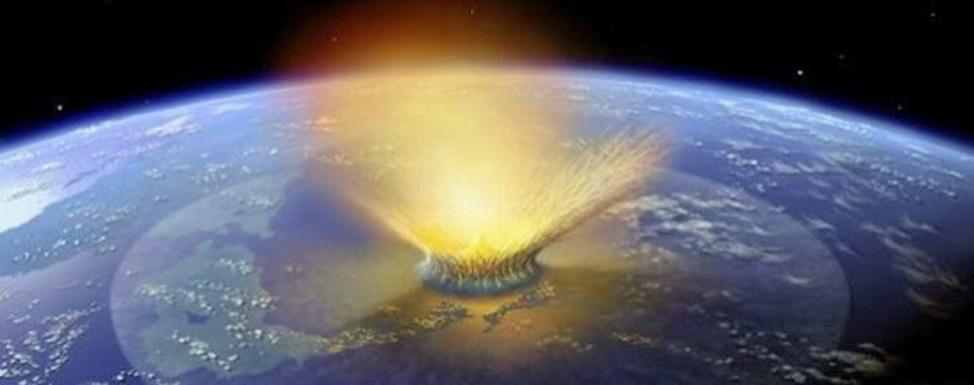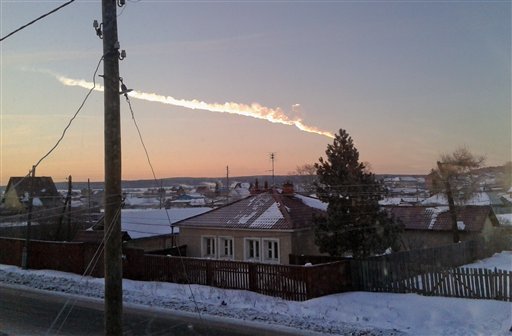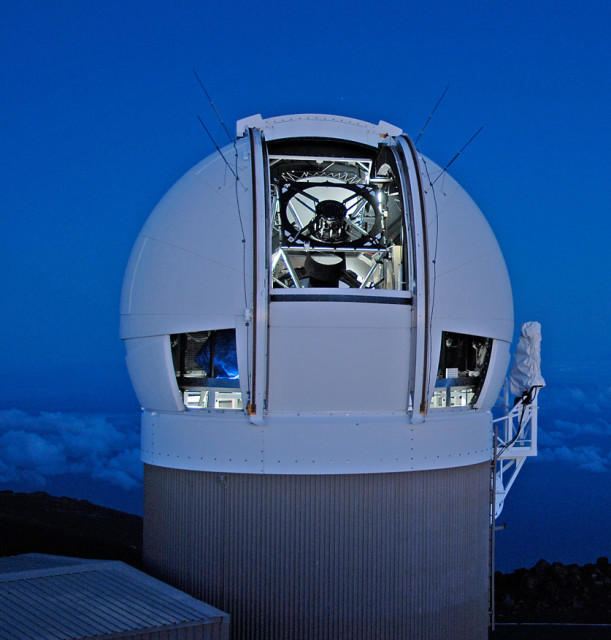
Asteroid impacting Earth (NASA)
NASA is taking the potential threat posed by near earth objects (NEO’s), such as asteroids and comets, more seriously than ever and has established the new Planetary Defense Coordination Office (PDCO).
The space agency says the new office will oversee all of its efforts in finding and characterizing all celestial objects that travel close to Earth as they orbit the sun. It will also coordinate any actions within and outside of NASA that may be needed to respond to potential threats of impact.

A meteorite contrail is seen over a village of Bolshoe Sidelnikovo 50 km of Chelyabinsk on Friday, Feb. 15, 2013. (Photo: AP/Nadezhda Luchinina, E1.ru)
“Asteroid detection, tracking and defense of our planet is something that NASA, its interagency partners, and the global community take very seriously,” said John Grunsfeld, associate administrator for NASA’s Science Mission Directorate in a NASA press release.
Grunsfeld went on to say that while there aren’t any impact threats right now, events such as the huge meteor that exploded over Chelyabinsk in 2013 along with the recent close approach of the ‘Halloween Asteroid’ serve as reminders of why it’s important close approach remind us of why we need stay on guard and ‘keep our eyes to the sky’.
Scientists say that the space object that exploded over Chelyabinsk, Russia in 2013 was about 17 meters across and had a mass of roughly 10,000 tons. It was reported that the blast shattered windows in about 7,000 buildings in the area and injured around 1,700 people, mostly due to flying shards of glass.

The Panoramic Survey Telescope & Rapid Response System (Pan-STARRS) 1 telescope in Hawaii has produced the most near-Earth object discoveries of the NASA-funded NEO surveys in 2015. (University of Hawaii Institute for Astronomy/Rob Ratkowski)
With projects such as its Near-Earth Object Program, NASA has already been involved with finding and tracking NEO’s and has been a part of international efforts to develop methods to protect Earth from significant threats of impacts.
The space agency says that the new Planetary Defense Coordination Office will improve and ramp up those efforts by working with other U.S. government agencies such as the Department of Homeland Security’s Federal Emergency Management Agency as well as similar agencies from other countries.
Near earth objects are found by astronomers who use a worldwide network of ground-based telescopes as well NASA’s space-based NEOWISE infrared telescope.
Once an object is detected NASA says that its Center for NEO Studies at the Jet Propulsion Laboratory then will precisely predict its orbit and then will monitor its movements.
NASA says since more than 90 percent of near earth objects larger than 1 kilometer have already been discovered, the space agency will focus on finding objects that are about 140 meters – about the size of an American football field – or larger.
So far, astronomers have discovered more than 13,500 near-Earth objects, which vary in size from small boulders to those that are hundreds of kilometers in diameter. NASA says that about 1,500 near earth objects are spotted every year.






















Comments are closed.